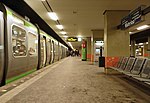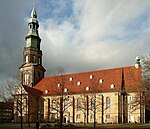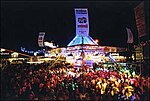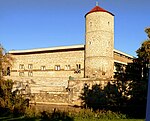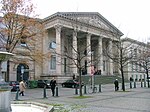Waterloo Column

The Waterloo Column (German: Waterloosäule) is a victory column commemorating the Battle of Waterloo. While a statue of the goddess victory is placed atop the column, the sentiment is somewhat tempered by the tribute to fallen soldiers named on the column's base. It is located in Hanover in the German state of Lower Saxony. It was built from 1825 to 1832. It was designed by Georg Ludwig Friedrich Laves, who had been the Hanover court architect since 1814. The troops honored, though German, had been fighting in an army loyal to King George III, who ruled the United Kingdom of Great Britain and Ireland, since he was also the ruler of the Kingdom of Hanover through Personal Union.
Excerpt from the Wikipedia article Waterloo Column (License: CC BY-SA 3.0, Authors, Images).Waterloo Column
Lavesallee, Hanover Calenberger Neustadt (Centre)
Geographical coordinates (GPS) Address External links Nearby Places Show on map
Geographical coordinates (GPS)
| Latitude | Longitude |
|---|---|
| N 52.366694444444 ° | E 9.7275 ° |
Address
Waterloosäule
Lavesallee
30169 Hanover, Calenberger Neustadt (Centre)
Lower Saxony, Germany
Open on Google Maps
